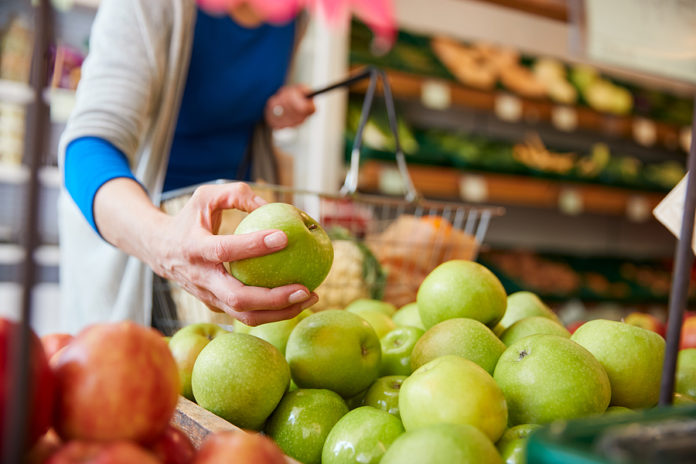
The increase in at-home cooking and eating gave fresh food revenue a push during the pandemic. Sales of fresh food jumped 10% in 2020 and stayed strong in the first half of 2021. But frozen’s growth outpaced fresh with an increase of 21% last year, and its closest equivalents to fresh food had even faster growth.
To find out what’s driving their fresh and frozen purchases, Deloitte interviewed 2,000 US-based adults for the third edition in its annual Future of Fresh series. The report also divides respondents into two primary fresh buyer groups: contemporary — generally younger, urban-dwelling consumers with more income — and conventional — older, lower-income, and more rural consumers. This year’s survey group included 48% contemporary consumers (up from 40% in 2020) and 52% conventional consumers (down from 60%).
Deloitte identified three primary reasons frozen has been gaining more popularity among consumers — perishability, price, and preference.
Fresh doesn’t stay “fresh” as long as frozen
Buying frozen over fresh allowed many consumers to stay stocked up during the pandemic while minimizing trips to the grocery store. Around 75% of consumers say they find frozen food convenient to store, and 30% have expanded their freezer capacity to store more.
As consumers become more aware of food spoilage and waste, frozen food also helps them reduce waste. More than seven in 10 consumers take food waste into account when deciding what food to buy, 60% believe fresh food’s shelf life has recently decreased, and 45% say they’ve been wasting more fresh food than before.
Barb Renner, vice chairman and US Consumer Products Leader at Deloitte LLP, adds that fresh food waste is more likely the result of supply chain challenges, not because consumers aren’t buying it. “Consumers are still buying tons of fresh,” she says. “Buying more frozen to eat after the fresh food they buy is consumed or spoiled is how consumers are self-managing waste.”
Unstable, high prices hurt the success of fresh
Nine in 10 consumers told Deloitte that price is the most important influencer for buying fresh. But rising food prices prompted shoppers to rethink what they purchase and gave frozen another advantage over fresh.
More than 60% of consumers said fresh food is more expensive than frozen alternatives. And 65% said fresh prices are higher than in 2020 — among them, 82% think those prices rose more than was justified.
Frozen food prices, on the other hand, have changed little according to consumers, and 60% believe they’re more stable than fresh prices.
Health and convenience give frozen an edge
Over the years, frozen food has improved in quality and variety. Add these attributes to its quick preparation — half of consumers say frozen is easier to prepare than fresh — and it’s easy to see why consumer preferences lean toward frozen. Most Americans have a positive perception of frozen food in terms of health, too, with more than half trusting in its ability to preserve vitamins and nutrients.
It’s primarily younger consumers who are giving frozen a boost. Depending on the food category, 47% to 57% of consumers between the ages of 18 to 34 say frozen foods are on par with or better than fresh. (Percentages range from 23% to 39% for adults 55 and older.) “The category where they are most accepting of frozen is vegetables,” Renner adds. “Half of consumers think frozen vegetables are just as good or better than fresh.”
Safety has a strong influence on food purchases
The safety of their food is a high priority for consumers. Despite packaging waste, 60% of consumers would rather buy fresh food in packaging, believing it will stay fresh longer that way. And about 90% of contemporary consumers say they prefer fresh food that’s packaged to prevent contamination.
Another role of packaging, Renner says, is information. “Our survey revealed that 62% of consumers pay attention to food recalls and check packaging to see if their purchases were included in a recall. This highlights the need to strengthen traceability capabilities through innovative packaging techniques.”
Consumers are also concerned about the safety of people. Protecting their own and others’ health and safety is an important factor to nine in 10 consumers while shopping for fresh foods. Food workers factor into this, too, Renner says, as 81% of consumers would rather buy fresh foods from brands that protect their workers’ health and safety. “So taking good care of their workers is not only the right thing to do, but it can help drive sales.”
Fresh still has its share of success
While it might seem like things are shifting in favor of frozen, fresh food still has the larger market share of the two and generates more excitement among consumers. “Consumers are still very much interested in buying and consuming fresh food,” Renner says. “About nine in 10 consumers said that eating fresh foods literally makes them happy, and this has not changed over the last two years of the survey.” Only 40% say the same about frozen food.
Six in 10 contemporary consumers say they’ve been buying more fresh food (up 10%), and about 80% would even pay a premium for it. This group also tends to buy more fresh food online — 68% bought at least some fresh online, far more than contemporary consumers (10%). And they’re more likely to seek out fresh food subscription services and low or no-prep meal solutions. “Consumers’ lives are getting more hectic,” Renner adds, “and incorporating more fresh food into meal solutions consumers can grab and go could certainly help.”
But there’s no denying frozen’s place in the new normal. And Deloitte’s report includes a few recommendations for producers and suppliers that are adapting to changes in consumer shopping behaviors:
- Improve supply chain efficiency to move fresh food faster. Food companies “can enhance freshness by reducing the time fresh foods spend in the supply chain,” Renner says, “which hits the perishability factor by increasing the time consumers have to eat fresh food after purchase.”
- Consider moving more fresh food toward frozen products, either creating new or expanding existing frozen product lines.
- Bring more food to online channels, including direct-to-consumer and subscription services.
Of course, frozen will continue to be a challenger to fresh, especially considering its current advantages. But “if all other things were equal between fresh and frozen,” Renner says, “like on price and time to spoilage, most consumers still prefer fresh food.”









